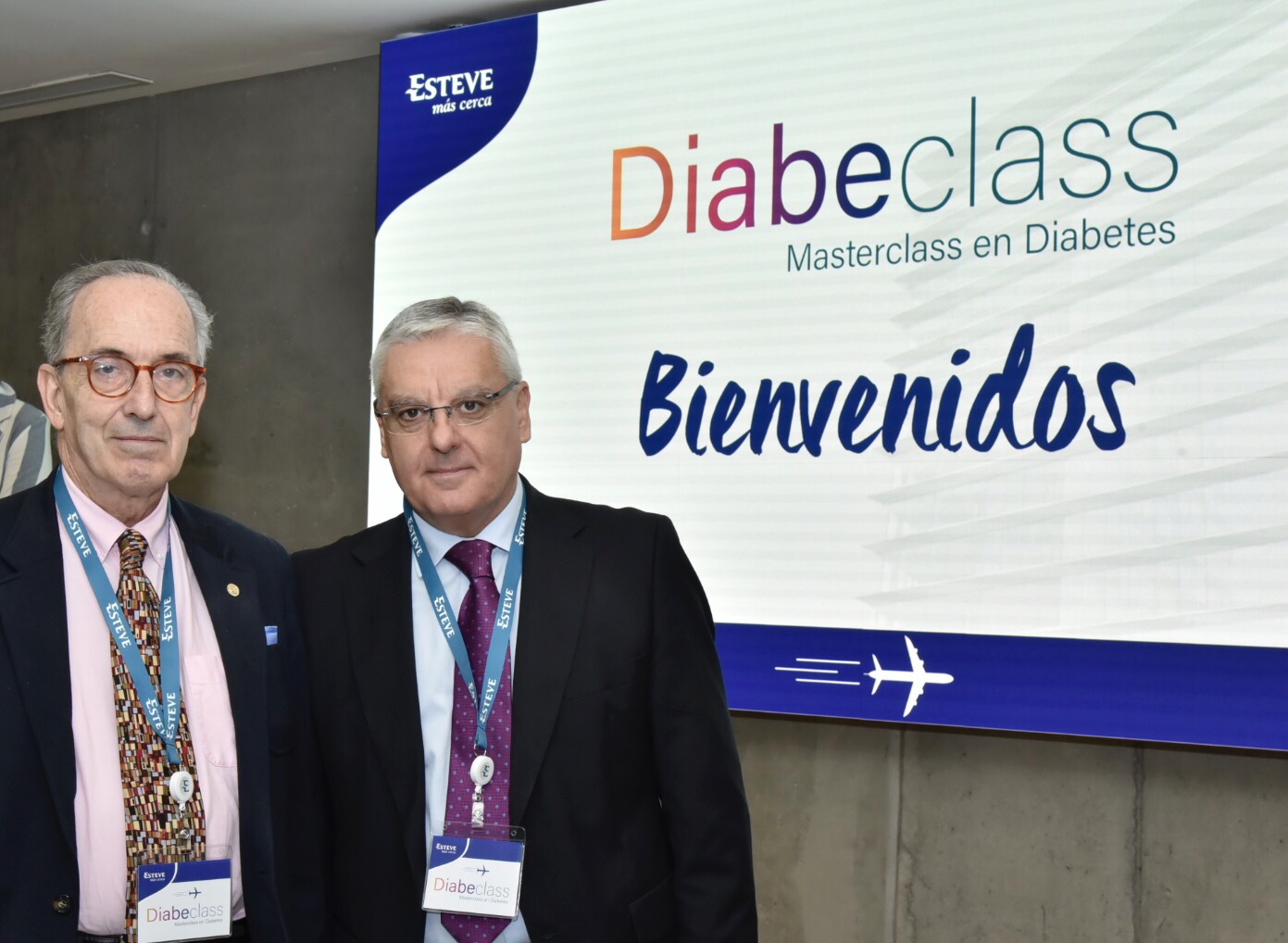08/10/2018
ONE THIRD OF DIABETIC PATIENTS ARE OLDER THAN 75 YEARS AND THEIR HYPOGLYCEMIA GOES UNDETECTED IN 1 OUT OF 5 CASES
According to experts attending Diabeclass, a meeting organized by ESTEVE
at its corporate headquarters titled "Managing elderly patients with
type 2 diabetes".
The priority of the primary care physician is treating with low risk of hypoglycemia and less strict glycemic control in elderly patients.

Elderly patients with type 2 diabetes are particularly vulnerable to hypoglycemia. In one out of five cases, these episodes go undetected due to the absence of the most frequent alarm symptoms: sweating, tremors and dizziness. The objective is to reduce their incidence by means of a less strict glycemic control as compared to the rest of patients. These are the main conclusions of Diabeclass, a meeting organized by ESTEVE at its corporate headquarters in Barcelona titled "Managing elderly patients with type 2 diabetes".
More than half of the Spanish population with type 2 diabetes is older than 65 years - the prevalence of this disease is 30.7% in males and 33.4% in females older than 75 years1. By elderly patient, however, "we do not refer only to patients older than 65 years", says Dr. Vicente Pallarés, Head of the Health Vigilance Unit at Unión de Mutuas, professor of medicine at the Jaume I University of Castellón, and moderator of Diabeclass. "This term is more closely related to the health status of each patient than to his/her chronological age".
The elderly patient is associated with fragility. According to Dr. Jesús Millán, Head of the Internal Medicine Service of the Gregorio Marañón University Hospital and moderator of Diabeclass, "they usually are multicondition, multimedicated persons with high comorbidity, some degree of dependency, and a high risk of hypoglycemia". "Fragility has an influence on the physician in terms of therapeutic inertia and maintenance of therapeutic decisions, even if modifying the therapy would be indicated, because increasing its intensity may increase the risk of hypoglycemia".
The priority is to select a treatment with a low risk of hypoglycemia because these patients are more likely to suffer a hypoglycemic episode. That is, the concept of fragility prevails over glycemic control, which should be less strict, mainly due to the possible consequences of hypoglycemia - ranging from a fall to cognitive problems, and even death.
The experts at Diabeclass have agreed on this, mainly because in 1 out of 5 insulin-treated patients hypoglycemia develops without the usual alarm symptoms - this is known as hypoglycemia unawareness (HU) - and because this syndrome increases the risk of severe hypoglycemia by six- to seven-fold.
Also at ESTEVE's Diabeclass, debate focused on how to improve and optimize the multidisciplinary approach to elderly patients with diabetes as well as on the interaction between the different attending specialists, from primary care to internal medicine, nephrology and endocrinology. Also, current therapeutic strategies to optimize the management of diabetes in these patients, whose characteristics differ considerably from those of the rest of diabetics, were analyzed.
Higher prevalence at earlier ages due to poor habits.
Eighty-eight percent of people older than 18 years attended to in primary care are either obese or overweight, and more than 50% are sedentary2. Experts warn that lifestyle changes in the young will exponentially increase the figure of 5 million Spaniards with type 2 diabetes over the next 20 to 30 years. This increase will not only involve the risk of diabetes, but also the risk of developing it at earlier ages.
According to Dr. Pallarés, "in 20 years" time we shall attend to people who have lived their adolescence in the 80's, 90's and 2000's and whose lifestyle has been completely different from that of their parents and grandparents; this will translate into a greater increase of the prevalence of diabetes". "IBERICAN data suggest that 19.8% of people older than 18 years attended to in primary care have diabetes, a figure that exceeds the current data".
Dr. Millán added that "obesity pandemics are subject to the maintenance of the high prevalence of the different cardiovascular risk factors: diabetes, dyslipidemia or high blood pressure". Dr. Pallarés pointed out that "the risk of diabetes will be higher in these people, as will the probabilities of developing this disease at earlier ages as compared to their parents and grandparents generations".
Both experts underlined the urgency of initiating actions "to revert this curve, because it's getting worse", according to Dr. Pallarés. All the more so since "the best treatment of diabetes is preventing it based on two main pillars: diet, exercise and weight control. It's in our hands", Dr. Millán stated.
Other topics approached in Diabeclass addressed renal disease, which is present in 60% of elderly diabetic patients and therefore leads to higher morbidity than cardiovascular disease (in 50% of cases) that increases with age. They also addressed nutrition advice as of the diagnose of diabetes bearing in mind the particularities of each patient, the usefulness of digital tools to professionals, patients and their families, or the medical-legal aspects of diabetes on account of the high mortality rate and higher risk of sudden death in these patients due to silent macrovascular complications.
References
1. Estudio Di@bet.es
2. Estudio IBERICAN (Identificación de la poBlación Española de RIesgo CArdiovascular y reNal).



